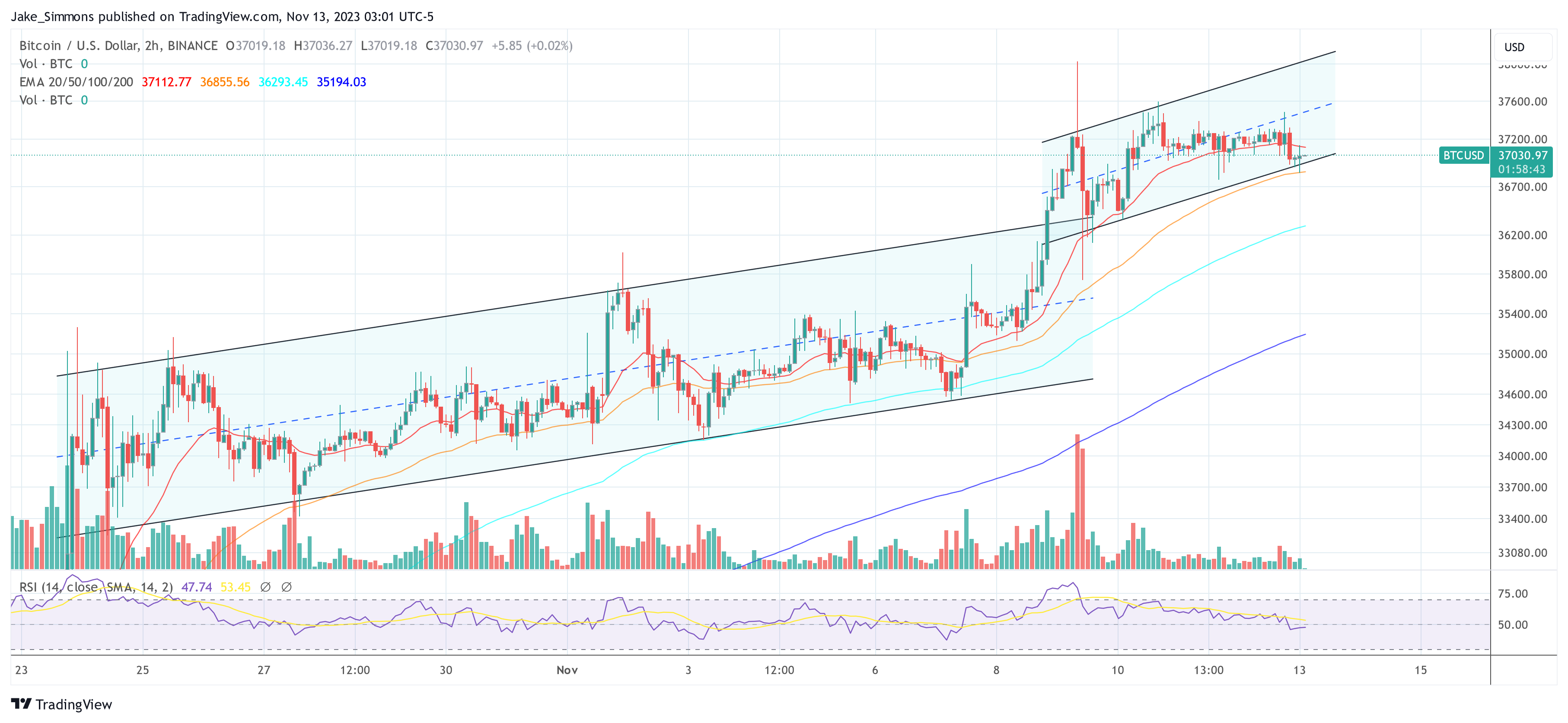In his last essayArthur Hayes, the co-founder of BitMEX, has laid out his investment playbook in the current global economic landscape, focusing on the potential of Bitcoin, cryptocurrencies, big tech and traditional financial markets.
Stupid transactions
Hayes begins with a blunt critique of traditional investment strategies, particularly the purchase of long-term bonds in the current economic climate. He explicitly states: “The dumbest thing you can do is buy long-term bonds with a buy-and-hold mentality.”
Hayes explains this view by highlighting the risks associated with these bonds, especially as liquidity conditions change, saying: “You will experience a market-to-market gain today, but…the market will absorb the impact of further Reverse Repo transactions will be discounted. [RRP] the balance will decline and long-term bond yields will creep up, meaning prices will fall.”
In terms of smarter investment approaches, Hayes recognizes the exploitation of short-term debt, as exemplified by Stan Druckenmiller. Hayes notes that Stan Druckenmiller used mega-long, two-year government bonds. He commented, “Great business, brah! Not everyone is interested in the best expressions of this profession (hint: it’s crypto). If the only thing you can trade are manipulated TradFi assets such as government bonds and stocks, then this is not a bad option.”
Hayes also states that a trade “that is a little better than the medium-smart trade (but still not the smartest) is to go long big tech.” Hayes focuses on AI-related companies. He identifies AI as a crucial future technology, stating: “Everyone knows that everyone knows that AI is the future. This means that anything related to AI will pump, because everyone will buy it too. Technology stocks are long-term assets and will benefit from cash being waste again.”
Smart transactions: Bitcoin and Crypto
However, the smartest trade is to go long crypto, which has significantly outperformed other assets compared to the expansion of central banks’ balance sheets. Hayes presented the chart below, which compared the performance of Bitcoin, Nasdaq 100, S&P 500, and Gold to the Fed’s balance sheet since March 2020, highlighting Bitcoin’s exceptional growth.

Hayes identifies Bitcoin as the top investment target, describing it as “money and only money.” Following Bitcoin, he points to ether as the commodity that powers the Ethereum network. “Ether is the commodity that powers the Ethereum network, which is the best internet computer.”
Categorizing other cryptocurrencies, he says: “Bitcoin and Ether are the reserve assets of cryptocurrency. Everything else is a shitcoin.” He further elaborates on alternative layer-one blockchains like Solana, calling them “all overhyped, me included, pieces of shit that won’t overtake Ethereum in terms of active developers, dApp activity, or Total Value Locked.”
Hayes also discusses decentralized applications (dApps) and their tokens. He finds this sector exciting because of its high return potential, although he acknowledges the risks: “Eventually all kinds of dApps and their respective tokens will pump. This is the most fun, because this is where you get the 10,000x return. Of course, you’re also more likely to get rough, but where there’s no risk, there’s no return. I love shitcoins, so never call me a maxi!”
Geoeconomic factors
Regarding his investment strategy in the context of the current economic fluctuations, Hayes explains his focus on the net of the RRP minus the Treasury General Account (TGA) to measure market liquidity, which informs his decisions on selling T-bills and Bitcoin -informs purchases. He emphasizes the importance of adaptability and says: “I will remain agile and flexible. The best laid plans of mice and men tend to fail.”
Hayes also delves into geopolitical considerations, particularly the potential impact of the conflict between Hamas and Israel on oil prices and monetary policy. He points out Bitcoin’s resilience in such scenarios: “Bitcoin has proven to outperform bonds in times of war. […] The long-term US Treasury ETF has fallen 12% since the start of the war between Ukraine and Russia versus Bitcoin, which has risen 52%.”
While he admits that Bitcoin could initially fall if Iran gets involved in the war between Hamas and Israel, Hayes says it would be a “buy the dip” situation.
In a candid conclusion, Hayes comments on the historical context of geopolitical conflict, expressing skepticism about the prospects for global peace: “Of course, if those in charge of Pax Americana are committed to peace and global harmony… no, I am not even gonna finish that thought. These mofos have been gone practice war since 1776, with no signs of cessation.”
However, according to Hayes, all roads lead to Bitcoin: “[It] will reassert itself as a real-time scorecard for the wartime health of the fiat financial system.”
At the time of writing, BTC was trading at $37,030.

Featured image from South China Morning Post, chart from TradingView.com

